Physical exercises promote muscle tone, strength and endurance, which will help the body carry the extra weight of pregnancy, prepare the woman for labor effort and will also collaborate to get the body back in shape after the baby is born
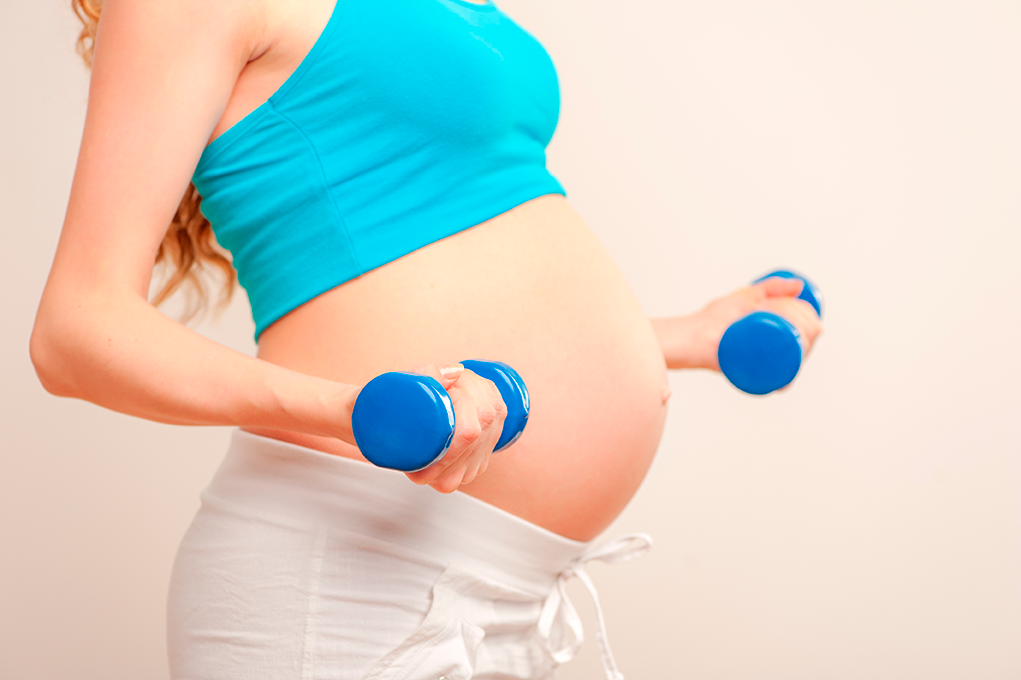
Motherhood is always a special moment in a mother’s life, where various care is required. However, pregnancy cannot be synonymous with sedentary lifestyle, because physical exercise, accompanied by a professional during this period, can make a big difference during pregnancy.
Physical exercise for pregnant women brings benefits to the functioning of the lungs and heart, decreases the pain and discomfort felt by mothers and even prepares these mothers for the moments of childbirth and postpartum. The important thing is to maintain the type of habitual physical activity that the pregnant woman already performed before pregnancy, just not performing impact exercises (such as running for example), especially in the first trimester of pregnancy.
As we said, it is essential to consult a gynecologist physician to assess the need and approval of physical exercises by the pregnant woman and also evaluate the frequency of these exercises. This should be done due to problems that may appear during pregnancy, such as high blood pressure, low placenta index, Cervical weakness, because these factors, plus physical exercise, can put pregnancy at risk.
Attention must also be paid to the pregnant woman’s heartbeat. Do not forget to question the doctor regarding the intensity at which each exercise should be performed.
The best exercises to be practiced in pregnancy are walking or stretching, for example, because they help reduce stress, fight anxiety and increase self-esteem. However, the practice of exercise in pregnancy should only be done under medical advice.
Exercises can be started at any stage of pregnancy and can be performed until the end of pregnancy, being useful to facilitate normal labor and return to optimal weight after delivery. However, those who were sedentary should prefer lighter exercises, and preferably in the water. Those who were used to exercising should slow down so as not to harm the baby.
Healthy pregnancy and physical exercises match very well! Staying active during more than 9 months of gestation promotes greater willingness, less swelling and nausea, fewer back and joint pain and prevents diseases such as gestational diabetes and hypertension that can lead to a preeclampsia condition. This all without counting the benefits for the time of delivery since you will have better muscle and cardiovascular preparation and a rapid recovery in postpartum.

Want another reason to cheer up starting the exercises right now?
A study by the University of Montreal shows that increased blood circulation in the placenta caused by aerobic exercises improves the oxygenation of the baby in the uterus favoring its brain development.
Ideally, the pregnant woman is to exercise at least 30 minutes, 3 to 5 times a week. But know that some care should be taken: avoid getting too long on your stomach, respect your limits, and listen to your body signals. Pain as a whole, including uterine contractions, dizziness, feeling fainting, palpitations and excessive tiredness show that you need a rest and remember that you always need to eat before exercise.
The practice of physical activities of regular to moderate intensity is indicated throughout pregnancy, with a specific program for each woman, according to the period of pregnancy in which she is and with her health conditions. Furthermore, activities that offer trauma risks are not indicated as: ball sports, fights (martial arts), skating and riding.
Cases of risk pregnancy, threat of abortion or premature labor are some of the impediments to physical activity. So it is very important that you have the release of your obstetrician doctor to start them in pregnancy. Women who already had the habit of exercising are usually released before. Ideally, the woman will try to start physical activity before pregnancy. Thus, when you become pregnant, you will already be adapted and there will be no problem in continuing it, as long as some adjustments are made as with regard to the intensity, duration and adaptation of some exercises.
Does maintaining good fitness really good?
Activity in pregnancy also decreases physical discomfort, such as back pain, constipation, fatigue and swelling, and helps maintain more stable mood and self-esteem and sleep in date. When the woman has a good physical fitness before becoming pregnant, she is more able to maintain a good level of activity during pregnancy, since it is not time, in pregnancy, to try new sports or more impact.
Is there a reason I shouldn’t exercise while I’m pregnant?
Some women need more care to exercise. Talk to your doctor before starting any physical activity if you:
• had some threat of miscarriage
• had a premature baby in the past
• you know you are at risk of premature delivery this time
• knows that your placenta is low
• had severe bleeding
• had problems with the lumbar spine or hip joints
• has some pre-existing disease
• has high pressure
• know you’re going to have more than one baby
I usually do high-impact physical exercises. Can I continue during pregnancy?
If you had a great physical fitness before pregnancy, it’s possible you can continue with the same activities. But talk to the doctor before doing high impact exercises and bodybuilding.
The advisable one is to “understand the body” to make sure that the training load is adequate. In pregnancy, the body needs more oxygen —because of the baby, the body will have less oxygen available to exercise. As long as you can train without losing your breath, it’s probably okay.
As for bodybuilding, the main objective during pregnancy should be to preserve muscle tone, and not develop more mass. Some experts prefer to recommend the use of less weight, and emphasize repetitions, since bodybuilding is a type of exercise that can raise blood pressure.
Further towards the end of pregnancy, changes in the body can prevent certain movements and, in order not to do them incorrectly, you may need to opt for another form of exercise. In relation to aerobic exercises, the safest thing is to keep those low impact. Activities where you need to run and jump all the time can force the body too hard or cause tumbles.
What are the best exercises for pregnant women?
Hiking, soft running, swimming, aqua gym and exercise bike are considered safe exercises during pregnancy. Yoga and Pilates are also good activities, but you have to make sure the coach has experience working with pregnant women.
I was sedentary and now I want to exercise. What care should I take?
After talking to the doctor and being released, you can do moderate exercises. Prefer low-impact activities, such as hiking or swimming, and start gradually, preferably with the help of a physical education teacher.
Should I change my exercise routine over the nine months of pregnancy?
Yes, it is important to adapt the routine of physical activities throughout pregnancy. Even if you are well active before pregnancy, your body will naturally tend to slow down, to accommodate the growing uterus.
It is especially important during the first trimester that you avoid raising the body temperature too much. After this period, you’ll also need to eliminate exercises that are done on the floor (belly up) or in which you stand long —both can reduce the flow of blood to the baby.
Are there sports that are not recommended for pregnant women?
If you are not a professional athlete, be careful with physical activities with the potential for tougher falls, melee confrontations or strong ball beats such as basketball, volleyball and football. Low-impact aerobic exercises are the most advisable.
Can you tell if I’m exaggerating the exercises and can I hurt the baby?
In general, do not exercise until you reach the limit of exhaustion. Be aware of the signs of your own body. A good rule is to lower the pace when you can no longer talk to someone while exercising.
Stop the exercises immediately if you experience dizziness, shortness of breath, feeling fainting, vaginal bleeding, difficulty walking, contractions or lack of movement of the baby (but keep in mind that the baby usually gets quieter when you exercise).
What are the recommended exercises for postpartum?
You probably don’t see the time to get your body back to normal, but start slowly. First, make sure you’re physically ready; then start the process of resuming the old form with a series of stretching and exercises to firm the body. When you succeed, add a second series of exercises.
If you have gone through a caesarean section, you can start doing light sit-ups and exercises for the pelvic floor as soon as the doctor releases.
Having time and mainly energy for physical activities with a baby to care can be quite complicated. But there are ways to incorporate your child into a daily exercise routine, such as taking him in the baby carriage for a good walk in a park, on the streets of his neighborhood or even on a walking path to the supermarket.
Exercises for pregnant women| Exercising during pregnancy
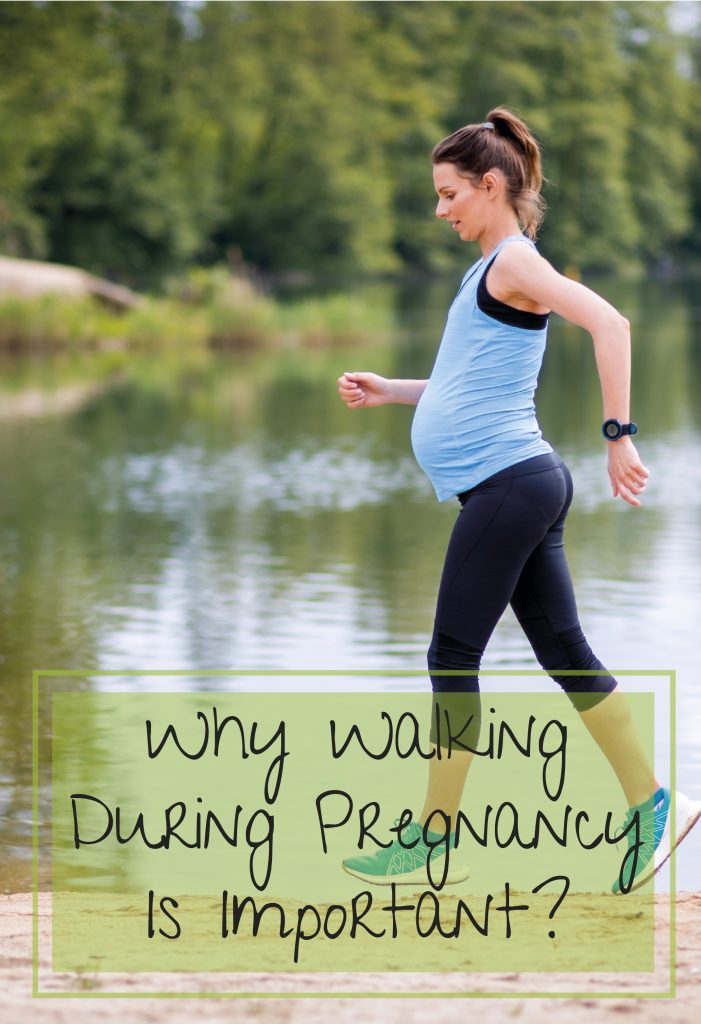
Walk
Walking is one of the great exercises for pregnant women. It, made in ideal conditions, can provide an improvement in cardiovascular functioning and blood flow of the body, thus decreasing swellings and stress. The ideal conditions for this activity are the use of light clothing, the walking surface should be regular and the ambient temperature should be below 38 degrees (100ºF). If this activity is done on treadmills, one should be careful about the area of the steps, which should be wide enough so that there is no imbalance of the pregnant woman.
Walking is ideal for women who were sedentary before becoming pregnant. Remember to wear light and elastic clothes and sneakers with good cushioning to prevent injury and drink plenty of water so as not to get dehydrated. You can walk 3 to 5 times a week at times when the sun is not too strong.
What it is: various muscle groups work and improve the cardiovascular system.
Benefits: decrease anxiety, increase physical endurance and breath, and help control weight gain.
When done: throughout pregnancy, but start with mild intensity in the first trimester, especially if you weren’t used to exercise.
What care: Remember to respect your own rhythm.
Soft Running
Indicated for those who already practiced exercises before becoming pregnant. It can be performed during the 9 months of pregnancy, 3 times a week, for 30 minutes, but always with low intensity, always respecting its own rhythm.
What it is: various muscle groups work and improve the cardiovascular system.
Benefits: decrease anxiety, increase physical endurance and breath, and help control weight gain.
When done: throughout pregnancy, but start with mild intensity in the first trimester, especially if you weren’t used to exercise.
What care: Control the heart rate. If you didn’t used to run before pregnancy, prefer the walk.
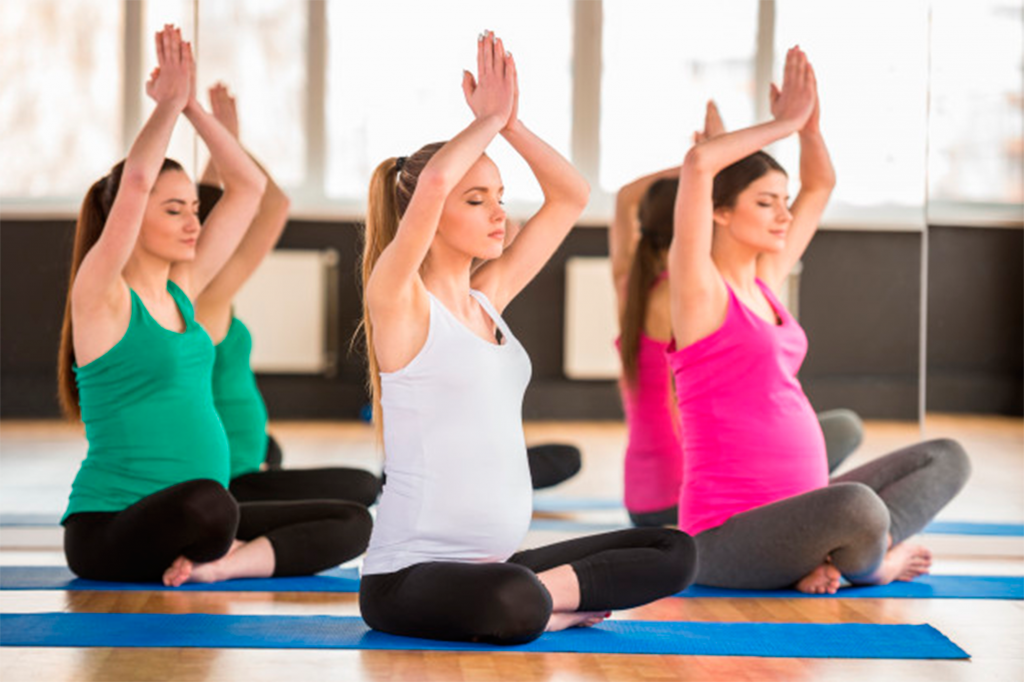
Yoga
Yoga postures are of great importance for pregnant women, as they lengthen and tone the body muscles, decrease back pain, besides relaxing well also those who perform them. In addition, this exercise provides greater body flexibility, which is a huge advantage for mothers to better adapt to the body changes that occur during motherhood.
What it is: Oriental practice that works body and mind through postures and breathing exercises.
Benefits: Increases your flexibility, balance and muscle tone. Decreases anxiety and some breathing exercises can be used during labor. There are yoga groups specific to pregnant women.
When to do: throughout pregnancy, but beware of changing your center of severity from the second trimester.
What care: avoid unfavorable positions for your belly.
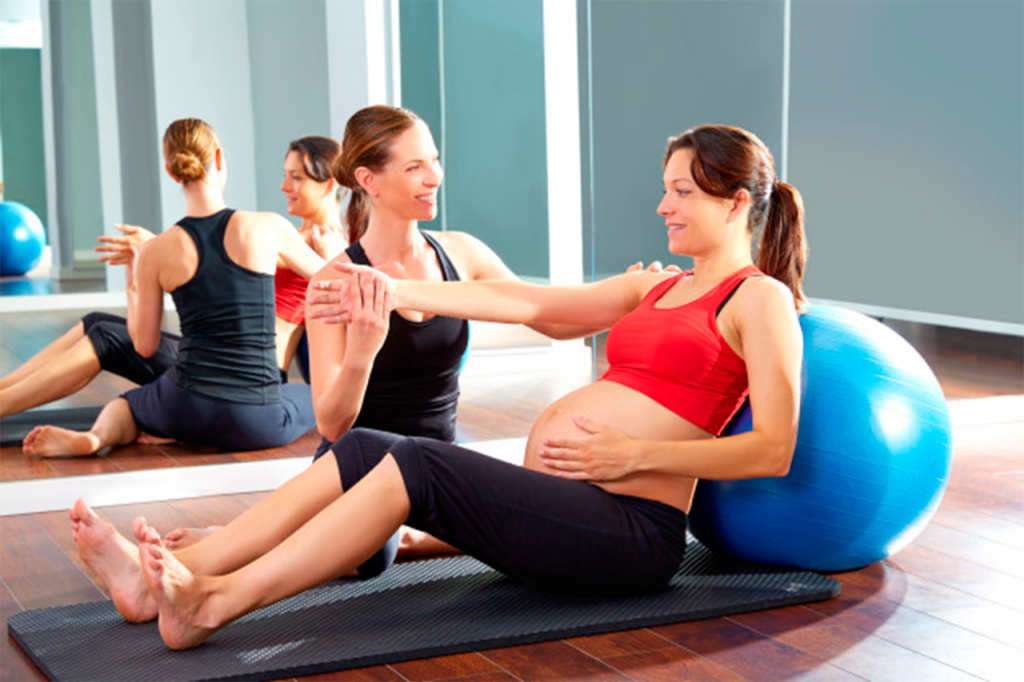
Pilates
Pilates is one of the most indicated exercises for pregnant women, because working muscles and breathing, essential factors for childbirth to be more peaceful. However, it is an exercise that must be practiced responsibly, as it can require a lot because of the positions and efforts it requires. Therefore, one should seek a physiotherapist who specializes in this modality for pregnant women. Pilates improves breathing, heart rate, lengthens and strengthens muscles and is great for posture. It can be practiced 2 or 3 times a week.
What it is: method for strengthening and stretching muscles done with gentle exercises controlled through breathing.
Benefits: strengthens pelvic floor muscles by helping belly weight support and normal childbirth. It also strengthens the muscles of the abdomen by improving posture.
When done: throughout pregnancy but may become uncomfortable in the third trimester.
What care: take light in exercises to the abdomen.
Tai Chi Chuan
Tai Chi Chuan’s exercises during this phase collaborates to keep the future mother calm, strong, resistant and elongated to face the moment of delivery. The baby benefits mainly from the mother’s deep breathing exercise and also for her calm, which is transmitted directly to her child.
What it is: soft Chinese martial art considered a form of meditation on the move.
Benefits: promotes muscle relaxation, reduces anxiety, increases balance and body awareness.
When to do: throughout pregnancy, but beware of changing your center of severity from the second trimester.
What care is: attention to movements that require a lot of balance, especially in the third trimester of pregnancy.

Hydrogymnastics
An alternative for mothers who have already practiced exercises or not and who brings the same benefits of swimming is water aerobics, an activity well indicated also for motherhood. The water temperature should not exceed 31 degrees (87.8ºF), as it can cause vasodilation and blood pressure drop, thus favoring the occurrence of fainting and also to the increase in the baby’s temperature.
In addition, the pH of the water should be quite controlled so that it does not extrapolate to the extremes, because if it is altered, it may lose its efficiency against bacteria, thus contributing to the occurrence of irritability in the eyes and favoring the increase of the risk of urinary infection. To ensure all these factors, it is important to learn about how water treatment was done. These are also apply to swimming activity.
It is indicated even for women who were sedentary before becoming pregnant and can be performed during 9 months of pregnancy. It reduces pain in the feet and back, as well as swelling of the legs. It can be performed 2 to 4 times a week.
What it is: activity done in the pool combining movements of arms and legs.
Benefits: Tone muscles and increase your breath and endurance.
When to do: throughout pregnancy. The benefits of water are great in the third quarter.
What care: it is best indicated if you already had the custom of swimming before pregnancy. Control heart rate (maximum 140 beats per minute during pregnancy) and prefer to swim at moderate intensity.
Exercise bike
Should I use the normal bike or the exercise? Undoubtedly, the exercise bike is the most suitable for pregnancy, preferably those that contain a backrest, so that the pregnant woman’s lumbar is not impaired. In addition, when riding on the exercise bike, the hip oscillates less than on the normal bike, which greatly avoids the risk of imbalance, injury and discomfort. This activity is also advantageous for the control of the pregnant woman’s breathing and for the control of the physical resistance of the pregnant woman, factors that are very important at the time of delivery.
It can be performed during the first 2 trimesters pregnancy, from 3 to 5 days a week. Attention should be attentive to heart rate, not to allow exceeding 140 bpm and observing whether sweating is excessive. The size of the belly at the end of pregnancy can make it difficult to perform this activity.
What it is: various muscle groups work and improve the cardiovascular system.
Benefits: decrease anxiety, increase physical endurance and breath, and help control weight gain.
When done: throughout pregnancy, but start with mild intensity in the first trimester, especially if you weren’t used to exercise.
What care: prefer the exercise bike to the conventional to avoid falls.
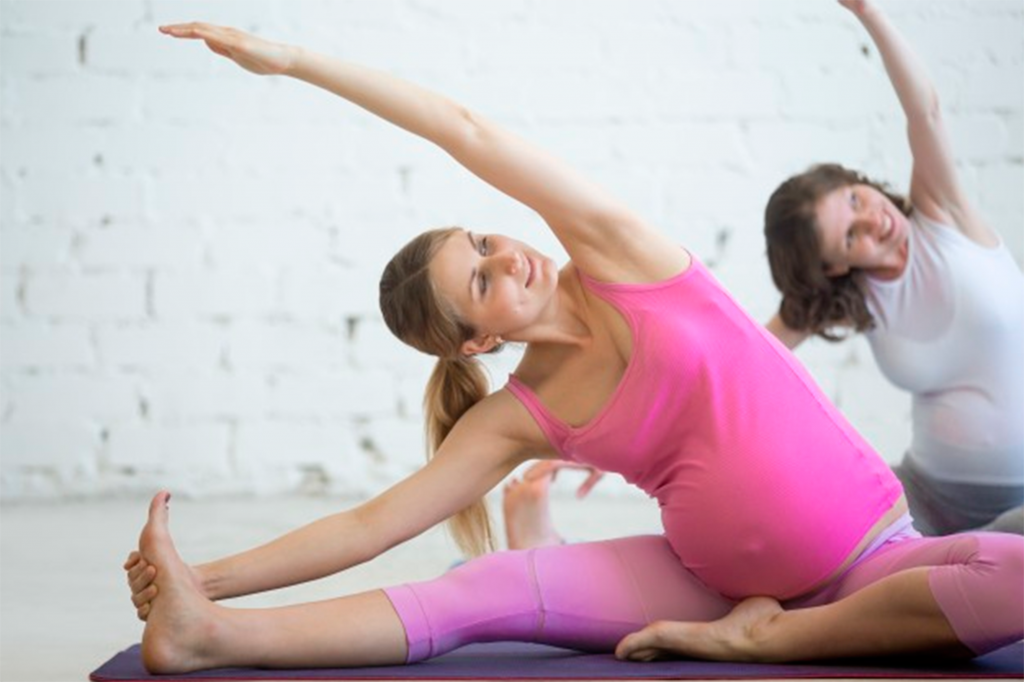
Stretching
These can be performed daily until birth, both by sedentary women and for the most experienced. It can begin with lighter stretching, and as the woman develops elasticity, increase the difficulty of stretching.
To ensure a safe physical activity it is important to have the guidance and follow-up of a qualified Physical Education professional and the authorization of the doctor. If the pregnant woman feels any unpleasant symptoms such as abdominal pain, discharge or blood loss through the vagina, while exercising or a few hours after class should seek medical help.
What it is: exercises focused on muscle flexibility.
Benefits: improve your flexibility and promote relaxation by helping to control anxiety.
When done: throughout pregnancy, but care should be redoubled in the third trimester since the pregnant woman’s joints will be more relaxed.
What care: respect the limits of your body.
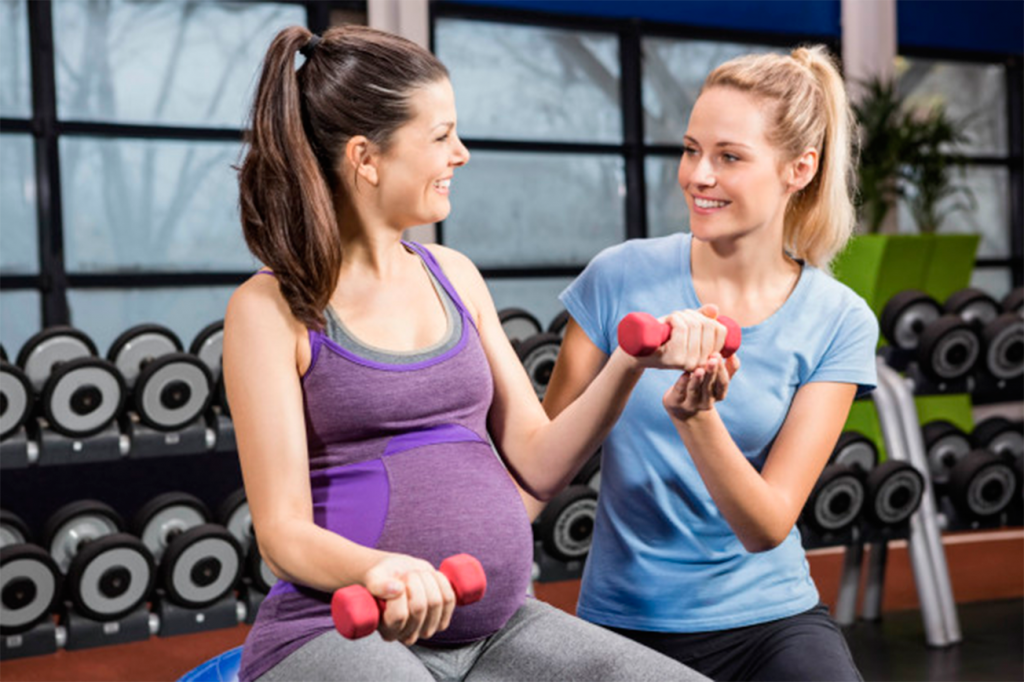
Lightweight bodybuilding
Pregnant women who were already bodybuilding before becoming pregnant and who had a good physical fitness can do bodybuilding exercises; however, the intensity of the exercises should be reduced, reducing weights by at least, in half, to avoid overload of the spine, knees, ankles and pelvic floor.
What it is: activity that works body muscles with weights and uses specific exercises for each muscle group.
Benefits: strengthens muscles by avoiding back and joint pain.
When to do: throughout pregnancy.
What care: avoid overload.
Unadvised exercise in pregnancy
High-impact exercises should not be performed in pregnancy because they can cause pain or even harm the baby. Some examples of contraindicated exercises in pregnancy are:
• Abdominal exercises;
• At high altitudes;
• Involving martial arts or jumps, such as jump lessons;
• Ball games such as football, volleyball or basketball;
• Strenuous running;
• Bicycle, in the last months of pregnancy;
• Heavy bodybuilding.
Exercise is also unadvised when the woman has to rest, under medical advice and when she has placental detachment. In case of doubt, contact the obstetrician should be contacted.
Related tags: #yoga poses to avoid while pregnant #yoga poses to avoid in pregnancy #yoga pregnancy exercises #yoga pregnant woman #yoga pregnancy first trimester #yoga pregnancy near me #pilates pregnant near me #pilates prenatal near me #pilates pregnancy exercises #pilates ball pregnancy exercises #stretching pregnancy back pain #stretching pregnancy exercises #pregnancy workout #pregnancy workout 1st trimester #pregnancy workout routine #pregnancy workout routine second trimester #pregnant gym workout #gym workouts while pregnant #gym workout in pregnancy
Disclaimer: This post may have affiliate links.
